The island of Delos is an archaeological site that played a major role in ancient Greek history. The island was dedicated to the Greek gods Apollo and Artemis. The sacred island of Ancient Greeks which, according to mythology, was revealed to Leto – who was chased by Hera – through the waves of the Aegean sea in order to give birth to Apollo and Artemis. The ruins of one of the largest and most impressive organized settlements of the Hellenic-Roman era are preserved in good condition on the island of Delos.
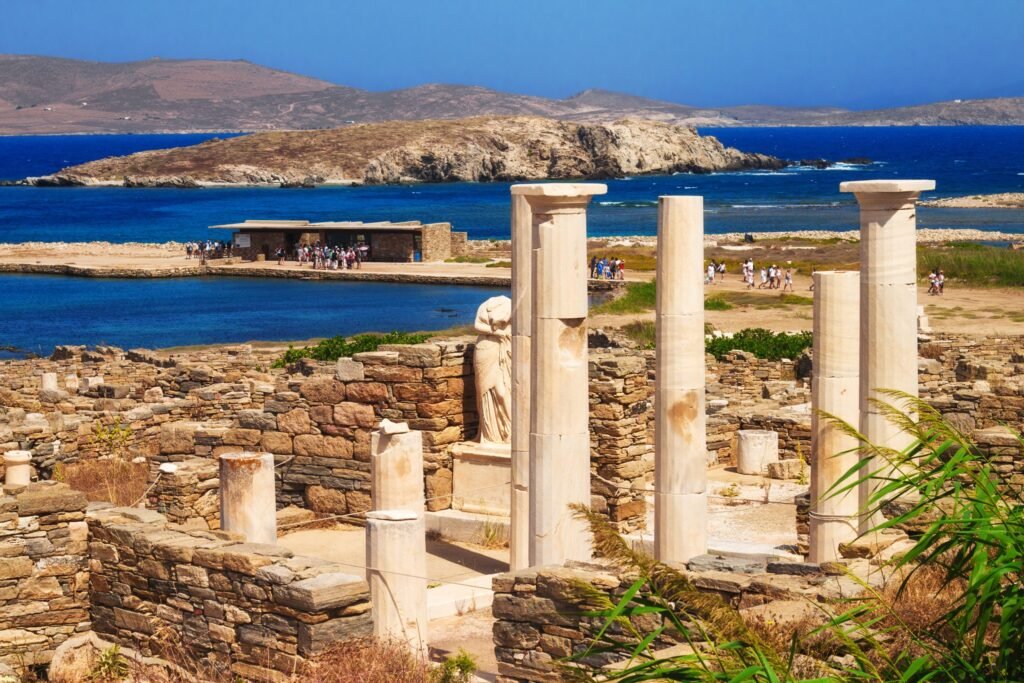
Many monuments can still be seen today and there is also a very interesting archaeological museum. It is one of the most significant museums in Greece, with a collection of sculptures, mosaics, and artifacts.
* The island is uninhabited, and overnight stays are prohibited and can only be reached by organized boat trips.
Location
Delos Island is a Greek island and archaeological site near Mykonos in the Cyclades archipelago of the Aegean Sea.
Archaeological Site of Delos
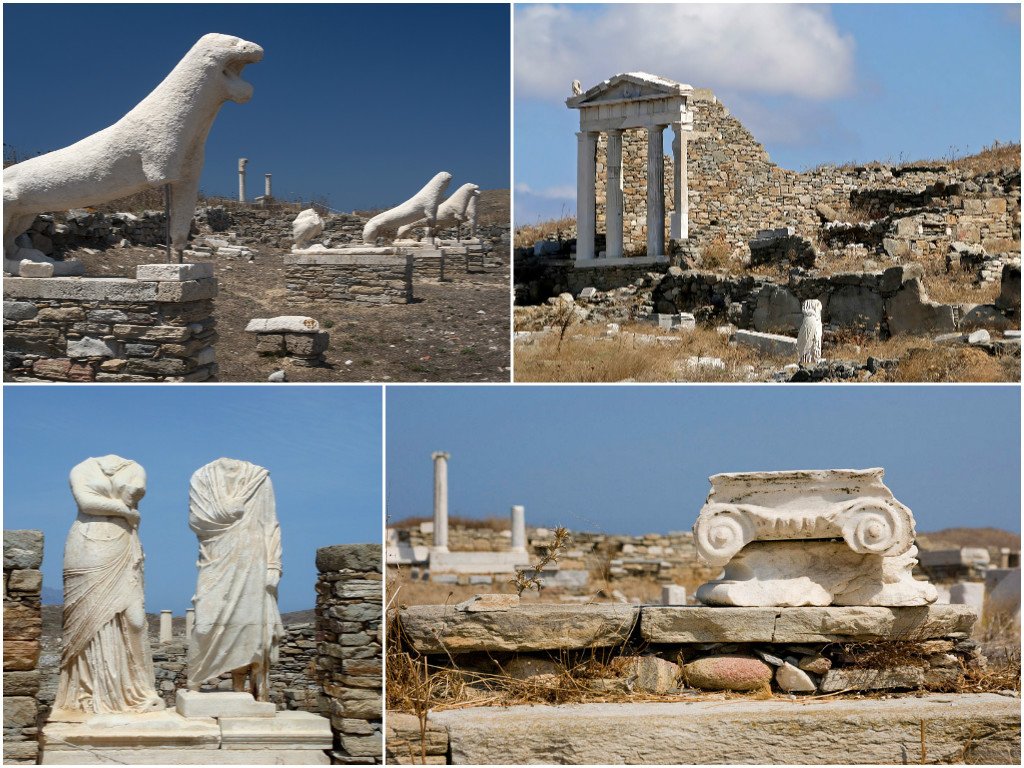
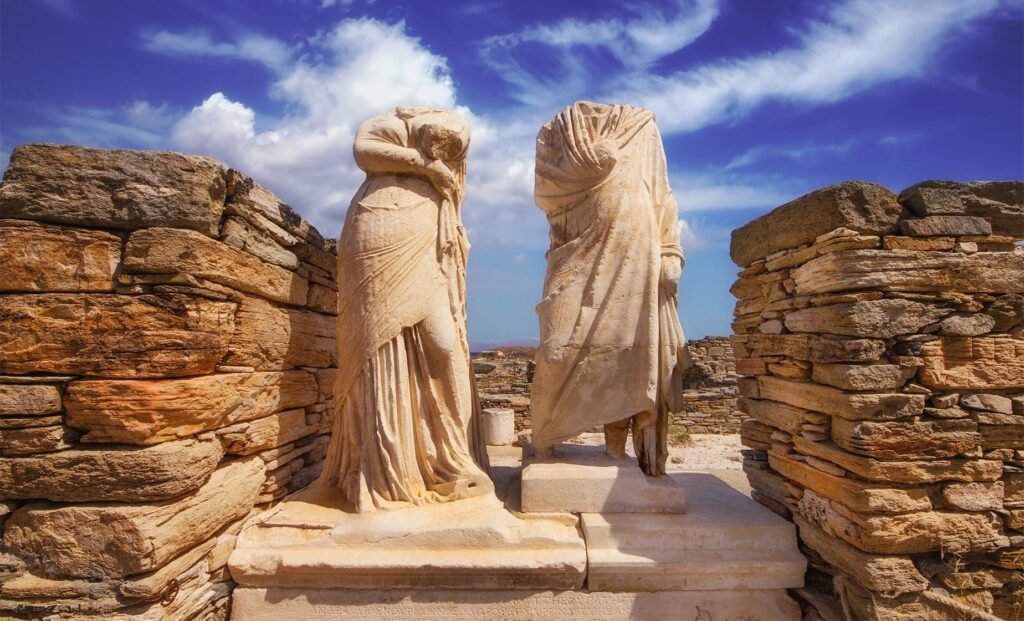
The small island of Delos has one of the most important archaeology sites in Greece. The island was considered sacred in ancient Greek culture as it was the mythological birthplace of Apollo and Artemis. The feast of the Delians, which was celebrated every four years, was one of the major events in the Greek world.
A small museum among the ruins shelters and exhibits some of the important objects unearthed during the ongoing excavations. This prosperity is attested by the grand temples, intricate mosaics, and homes that dot the remarkable Delos archaeological site today.
Terrace of the lions
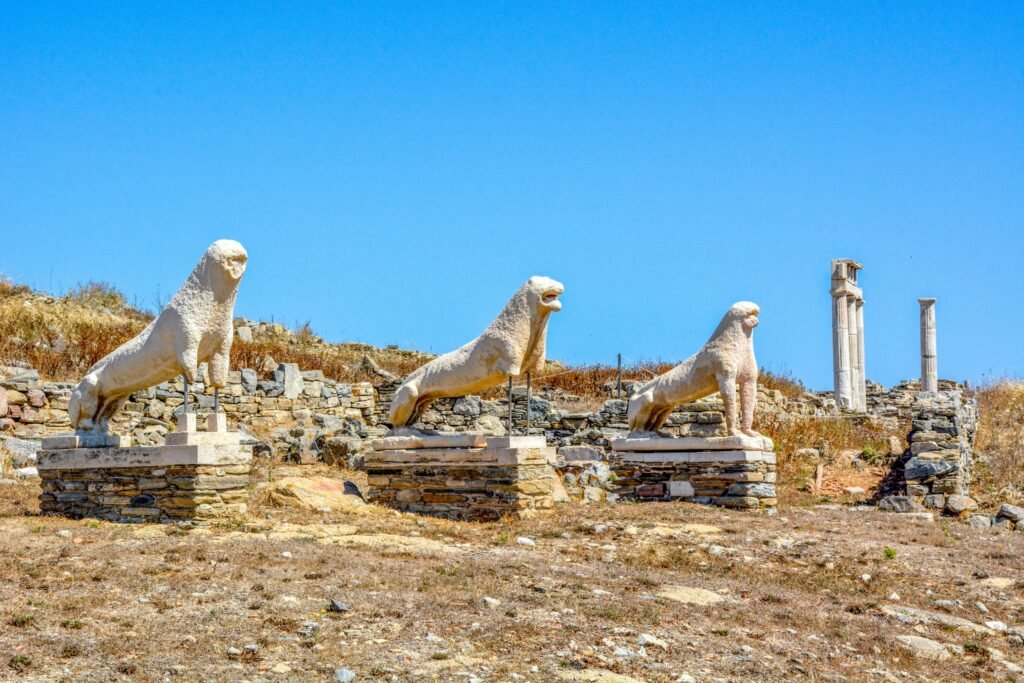
The Terrace of the Lions on the island of Delos is one of the most famous ancient sculptures in the world. The first intact lion was discovered in 1905, and all lion statues are kept in the exact condition in which they were found.
The Lion Terrace is a series of 12 stone lions with their mouths open as if roaring, all facing east. Some of the statues have deteriorated over the years due to climate change.
Ancient Theatre of Delos
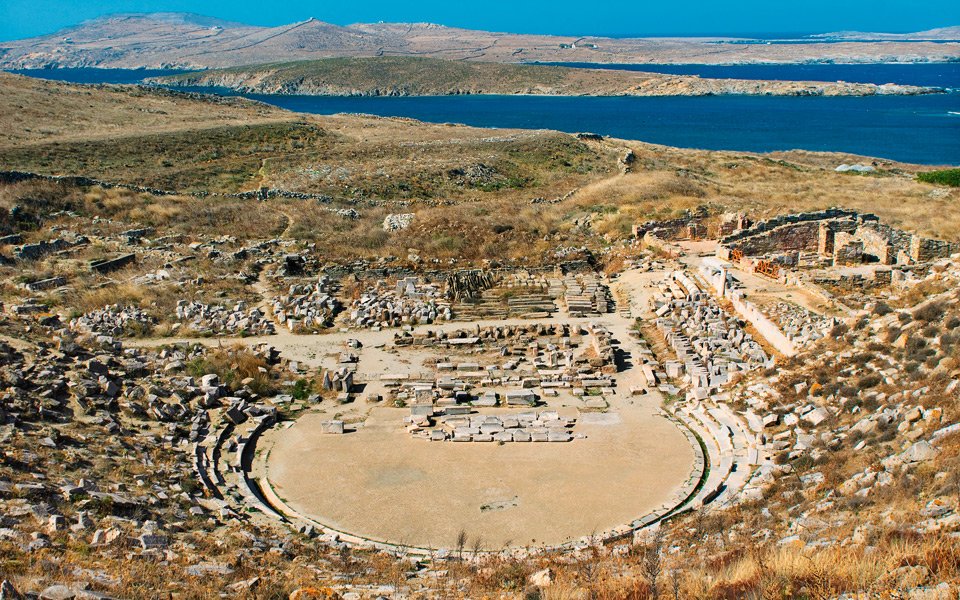
The Ancient Theatre of Delos is a testament to the rich history and cultural heritage of ancient Greece. This extraordinary structure, built in the 3rd century BC, once hosted dramatic performances and meetings, serving as the focal point of the community.
Today, it offers visitors an extraordinary insight into the past amidst the ruins. The theatre can accommodate around 5,500 spectators and features a semicircular shape with interesting architectural techniques.
Mount Cynthus

Mount Cynthus is a bare granite rock not more than 400 to 500 feet (120 to 150 m) high. It was probably the acropolis of the ancient town, and seems to have been surrounded by a wall.
On its sides are many architectural fragments of white marble, and on its summit are the foundations and remains of a large building of the Ionic order. In antiquity two flights of steps led up to the summit of the mountain; the one on the northern, and the other on the western side.
Archaeological Museum of Delos
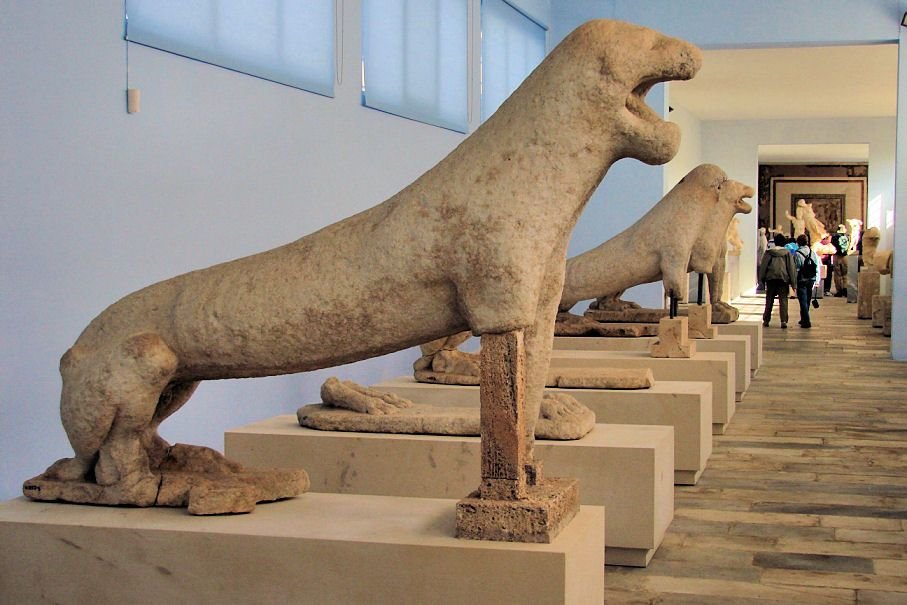
The Archaeological Museum of Dilos, was founded to house finds from the archaeological site of Dilos, the birthplace of Apollo and Artemis, as well as some objects from the islet of Rineia. Among the exhibits are sculptures and reliefs dating from the archaic period until the Roman times, including the lions of Dilos, vessels originating from the Prehistoric period until the Post-Hellenistic and Roman times, as well as small objects and household items from the private houses of Dilos.
